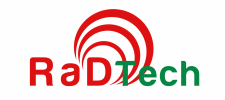In Ho Chi Minh City, every morning, hundreds of cartons of frozen seafood, dried fruits and vegetables, traditional medicines and functional foods are irradiated at the Radiation Technology Research and Development Center (VINAGAMMA). ) with a process similar to security checks at airports, but with more intense beams of photons or electrons instead. The process is part of the Food Irradiation Program established with the support of the International Atomic Energy Agency (IAEA) over the past two decades. Depending on the dose, irradiation will ensure that vegetables and fruits do not germinate or ripen prematurely; kill parasites and disinfect for spices; kills salmonella bacteria and fungi that can spoil meat, poultry and seafood.
In 1999, VINAGAMMA was born and the irradiation process was first established in Vietnam with the support of the IAEA and the Food and Agriculture Organization of the United Nations (FAO). Since then, the market for irradiated products has expanded, and the possibility of food exports has increased significantly. Food irradiation has made an important contribution to the competitiveness of our country's agricultural industry.
Mr. Cao Van Chung, Head of EB Machine Operation Department, VINAGAMMA said that the food output irradiated by this unit in 1999 was about 259 tons and this number increased to 14,000 tons in 2017. This shows the large increase in the demand for food irradiation. Today, VINAGAMMA can be considered as one of the leading facilities in the country in the field of radiation technology - a pioneer in the field of food irradiation.
The introduction of gamma ray irradiators and electron beam irradiators
The above growth was achieved through the introduction of two irradiation methods. The gamma irradiator has been in operation since March 1999, using ionizing energy from a shielded radiation source in a concrete room. Electron beam irradiators (EBs) have been in use since 2013. EB irradiators do not rely on radiation sources but use highly charged electron beams generated from specialized equipment such as accelerators. linear electronics. Food is not exposed to radioactive substances, so it both maintains quality and increases food safety without leaving radioactive residues.
Although the irradiation process of the two methods is similar, each method has its own and complementary advantages. Gamma irradiators use tall aluminum cans, which can hold a variety of product sizes. The boxes are moved through the irradiation chamber around the radioactive source suspended on a single overhead rail system. The products are all double irradiated to ensure all sides of the packaged product are treated. Meanwhile, the EB irradiator contains a double-sided beam, which makes the irradiation process three times faster than using a gamma irradiator, because all areas of the product can be irradiated in one ring. However, the EB irradiator is limited in size, with a maximum box size of 60x30x50 cm and a weight of 15 kg, so for larger and heavier products, a gamma irradiator must be used.

Tall aluminum cans filled with food, awaiting irradiation with a gamma irradiator.
The equipment works in parallel with each other, operates continuously 24/7, only stops working during the Lunar New Year holiday.
Before the advent of gamma irradiators and EB accelerators, the prevention of food spoilage was done by traditional methods including canning, refrigeration - freezing and chemical preservation, but with lower efficiency. , affecting the manufacturer's ability to export products.
The irradiators were equipped with support from the IAEA technical cooperation programme. The program also provides training courses for staff and expert consultants. Vietnam is one of 40 countries that the IAEA is supporting in this area.
Besides food irradiation services, VINAGAMMA also provides radiation sterilization of medical products and food pasteurization, commercialization of Center's research and development products, such as pesticides are used in agriculture and gold and silver nanoparticles are used in medicine. The Center also conducts research and development and provides training in the field of radiation technology. In addition, the Center also works with international partners to research and improve irradiation technology more and more effectively.






